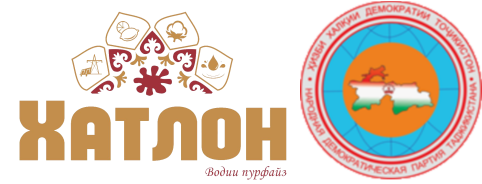
KULOB the city of valiants
A brief historical information. It is called one of the most ancient cities of Central Asia; with its ancient history, there are many years, that it is attracting the attention of erudites of the area-studies, ethnographers and the tourists around the world. The history of more than 2700 years old has been witnessed by many of archeological excavations and Kulob is mentioned as a prosperous city with the crafty (skilled) and at the same time courageous and valiant people in the history. In 1993-1994 the archaeologists Pavel Samoylik and Muzaffar Azizov have found a kiln next to Mir Sayyid Ali Hamadani’s shrine, that belonged to the seventh century BC, to talk more specifically, it was 2700 years old. The study of Kulob’s history has been started by the support of the national Leader, the President of the Republic of Tajikistan, respected Emomali
Rahmon in 2001and it is continued till the present. The archaeologists have chosen over 200 trenches for the studying purpose around Kulob city, which five of them are stored inside of the tomb’s kilns of Miri Kabir. The archeologists have found the large number of piece of potteries in each layer of the digged trenches, which have the size of 1, 5-2 meter and that they are the evidence of the civilization of Hakhomanishiyon reign. The acquisition of the ancient castle, named as “Kulob Castle” in today’s locality “Charmgaron” ward is one of the most ancient cities in Central Asia, being the evidence of Kulob’s ancient existence. Other memorials, which have been discovered, are the evidences of Qushonian, Bactrian, Hakhomanishiyon, Haytalian,
Sosonian and etc. reigns, that about each of these epochs there have been preserved the detailed information with the real facts in the Museum of 2700 Anniversary of Kulob city. Around the ancient city of Kulob, there are cities such as Hulbuk, Munk, Bubakon, Tandircharogh, Iskandara, Langar, Maranda, which had been known in Central Asia in IX-VII centuries — BC yet. This city with its pedigree horses – heading as “Aspi Khatli” (a racing horse) and the warrior and proud people was famous in the history in Khurasan and Warorud countries. About the relationship of Aspi Khatli to Khatlon (Khutalon) province (region), there are clear interpretations and explanations in the most cultures (dictionaries).
Attractive travelling areas of the city. There are many interesting places to attract the tourists in Kulob, that the famous ones are these: Center of The 2700th anniversary of Kulob; Museum of the national poet of Tajikistan – Saydali Valizoda, Museum of national poet of Tajikistan — Ashur Safar; Monument of the King – Ismoili Somoni, Monument of the poet of the classical Persian – Tajik literature; native born of Kulob – Shamsiddin Shohin, Boulevard of Heroes, Squares of the National Flag and State Symbol; Statue “Mother”, Statue “Family”, Statue “World War II”; Botanic Garden of the city, The river full of fish “Devonachanor”; Tomb of the oriental Wiseman Mir Sayyid Ali Hamadani, Tomb of Khoja Ishoqi Khatloni, Tomb of Khoja Ghoib (the well-known people of Kulob are buried there) etc.
There are seven hotels, guest-houses and campings active in Kulob city, they are equipped with all modern conditions and titled as “Khatlon”, Kulob”, “Chinor”, Kulob-Pamir”, “Silk Road”, “Doro”, Kulob’s Evening”.
Folk craftsmanship and skills.
Kulob city is known for its skillful craft artists from ancient time. Nowadays people in Kulob city are engaged with the various traditional and modern folk arts. They are weaving (knitting, carpet-making, mat-making); sewing (chakan-sewing, piece-sewing, cap-sewing, needle-work, chodar-sewing, zarduzi-sewing, sheroz-sewing, shoemaking); felt production, carpentry, (making wooden kitchen stuff, sculpture-making, horse-saddle making, cradle-making, producing musical instruments); blacksmith work (household tools such as: axe, hammer, spade, mattock, sickle, traditional baking oven, standing traditional baking oven …); jewelry, cooking (special use of milk meat, dough and greens products…) and so on. As well as, Kulob crafty women make various types of national dishes, such as: qalama, tahmol (types of bread with layers), oshi burida (homemade dumplings), oshi palow (palow), qurutob, mantu, shirbat, soup, porridge, nishoista and so on very skillfully.
Добавить комментарий Отменить ответ
Для отправки комментария вам необходимо авторизоваться.
Ҷустуҷӯ
Хабарҳои охирин
- Program of the International Tourism Forum and Exhibition «Welcome to Ancient Khatlon» 20.02.2024
- ФОРУМ ВА НАМОИШГОҲИ БАЙНАЛМИЛАЛИИ САЙЁҲИИ МАРҲАБО БА ХАТЛОНИ БОСТОН TOURISM FORUM AND EXHIBITION WELCOME TO ANCIENT KHATLON 20.02.2024
- Натиҷагирии фаъолияти Кумитаи рушди сайёҳӣ дар соли 2023 ва вазифаҳо барои соли 2024 09.01.2024
- Achievements of the tourism sector of the Khatlon region 18.12.2023
- Мақбараи Мавлоно Қутбиддини Нишопурӣ/Мавзолей Мавлоно Кутбиддина Нишопури/Mausoleum of Mavlono Qutbuddin Nishopuri 04.12.2023
Хазина
- Февраль 2024 (2)
- Январь 2024 (1)
- Декабрь 2023 (2)
- Ноябрь 2023 (5)
- Октябрь 2023 (9)
- Сентябрь 2023 (7)
- Август 2023 (2)
- Июль 2023 (13)
- Май 2023 (5)
- Апрель 2023 (1)
- Март 2023 (30)
- Февраль 2023 (21)
- Январь 2023 (16)
- Декабрь 2022 (8)
- Ноябрь 2022 (7)
- Август 2022 (9)
- Июль 2022 (4)
- Апрель 2021 (11)
- Март 2021 (8)
- Июль 2020 (4)
- Июнь 2020 (6)
- Апрель 2020 (2)
- Март 2020 (2)
- Февраль 2020 (2)
- Январь 2020 (2)
- Октябрь 2019 (3)
- Июль 2019 (3)
- Июнь 2019 (6)
- Май 2019 (3)
